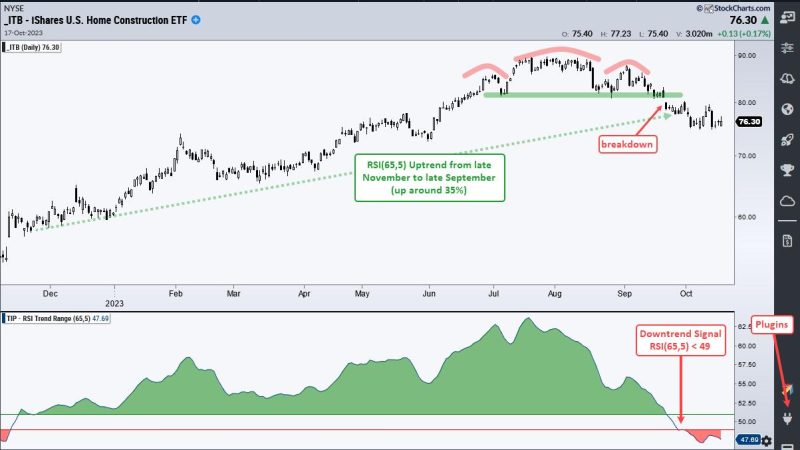Home construction ETFs have been on a downward trend for months now and the weakness in the sector finally broke out last week as a home builder set up for further downside. iShares US Home Construction ETF (ITB) was the top performer in the S&P 500 last week, falling 3.3 percent compared to the index’s 0.8 percent decline. The ETF’s losses have been led by shares of homebuilder Lennar Corporation, which showed high volatility last week, with a 7.3 percent drop on Thursday following a disappointing earnings report.
Analysts are concerned that the current housing market will not see any near-term recovery, citing weaknesses seen in pending home sales, housing starts, housing permits, and new home sales. These concerns have led to bearish sentiment on homebuilders and have caused volatility in home construction ETFs.
The performance of homebuilding stocks is closely linked to the strength of the economy, jobs market, and consumer sentiment, so any pullback from these key areas could lead to a further and continued downside for the sector.
It is important for investors to understand the risks associated with investing in home construction ETFs, as volatility in the sector is likely to remain high until the economy is restored to its normal functioning. A sustained downward trend could lead to investors feeling uncomfortable and potentially miss out on potential upside gains should the market recovery occur quickly.
Furthermore, individual company fundamentals must also be taken into consideration as not all stocks in the sector will move in tandem. Stock pickers may look to focus on more defensive home builders such as D.R. Horton, PulteGroup, or Beazer Homes USA that have relatively low debt and more liquidity than some of their counterparts.
Overall, investors should take a careful approach to investing in home construction ETFs in the current environment given the significant downside risk. That said, investors who are comfortable taking on higher risk can use the recent dip in the sector as an opportunity to capture potential upside returns should housing numbers improve.


